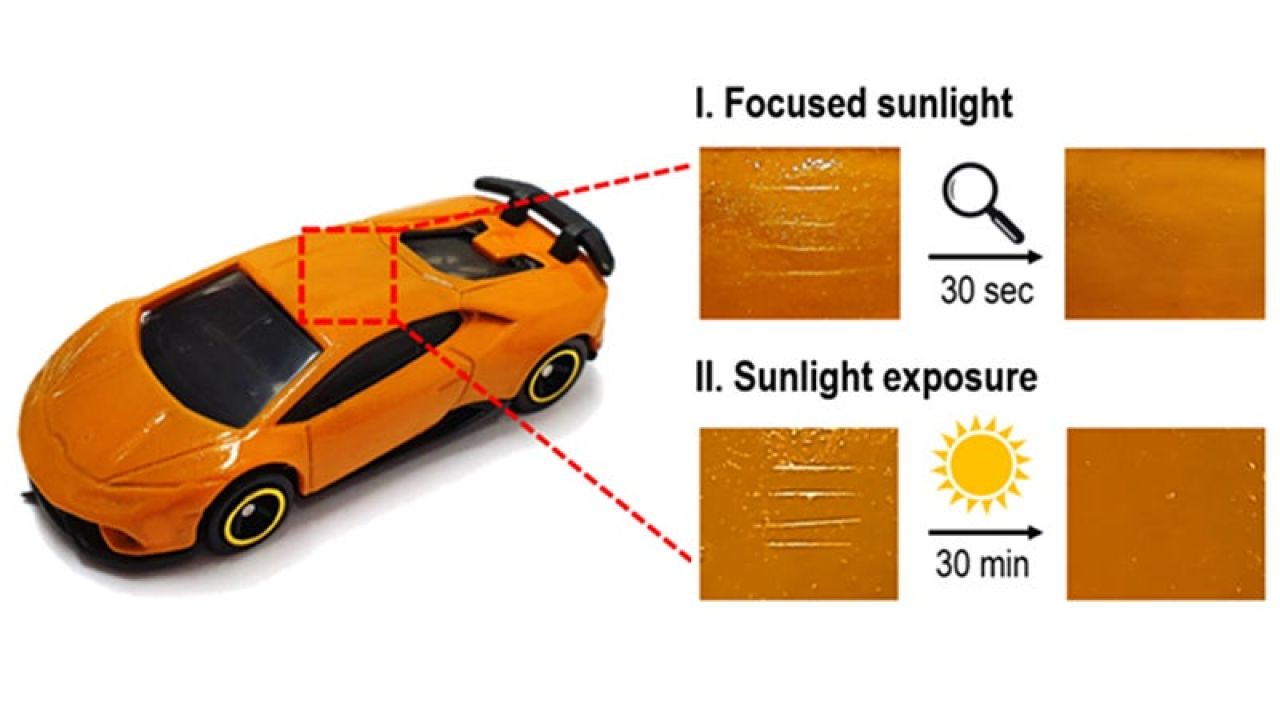Like a screen protector for your entire car, a new protective coating developed by researchers at the Korea Research Institute of Chemical Technology could actually go one step further than the plastic films you apply to your smartphone’s display. When exposed to the sun, it’s able to heal itself, making scratches completely disappear in as little as half an hour.
Unless you keep it parked in a garage all the time, getting a scratch on your vehicle is inevitable; be it from another vehicle in a parking lot, or a rock kicked up while driving down the road. Protective coatings exist that help protect a vehicle’s finish and minimize the risk of a scratch going deep enough to damage paint, expose the underlying metal panel, and increase the risk of rusting, but even a protective coating will show scratch marks that either need to be buffed out or remedied by a professional with the right tools.
For those wanting to keep their vehicle looking as pristine as it did the day it rolled off the dealership’s lot, but without putting any effort or money into its upkeep, self-healing protective coatings have been in development for a few years, but with some challenges that have been hard to overcome. Materials that exhibit malleable properties to facilitate the repair of scratch damage are also not very durable, so a vehicle would actually be more prone to scratches more frequently, while harder materials that are less prone to being damaged also exhibit less effective self-healing tendencies when a physical impact is strong enough to produce a visible scratch.
Researchers from the Korea Research Institute of Chemical Technology came up with a best of both worlds approach. They upgraded a highly durable protective resin coating with a reversible polymer network material based on acryl polyol, as well as introducing a photothermal dye. The dye absorbs infrared light from the sun and turns it into thermal energy, which increases the surface temperature of the protective coating. The chemical bonds of the coating’s polymer structure react to the increased heat by dissociating and then recombining again, slowly rebuilding the damaged polymer structure where a scratch occurred until it’s completely repaired and gone.

The healing process can be accelerated using a high-intensity light source like a laser or by going old school with a magnifying glass, but testing with a small model car treated with the coating found that simply leaving the vehicle with visible damage out in the bright midday sun for about 30 minutes generated enough heat to completely heal the scratches.
The effectiveness and speed of the healing process depends on several factors, including the intensity of the exposure to the sun, but the researchers are confident it could not only be used on full-sized cars, but also as a way to protect other vehicles like boats and plans while minimizing maintenance demands. And yes, it could even be applied to devices like smartphones, so the next time your device takes a tumble onto pavement and walks away with scars reminding you of your clumsiness, you could just leave it on a windowsill for a while and come back to a device that looks as good as new.
Editor’s Note: Release dates within this article are based in the US, but will be updated with local Australian dates as soon as we know more.
